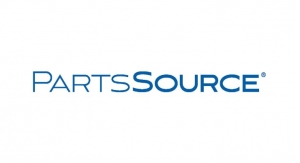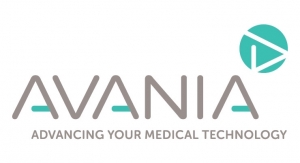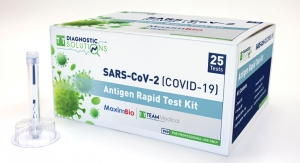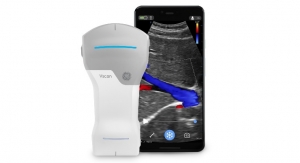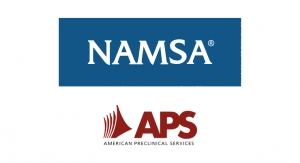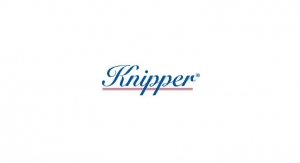David C. Robson, Principal, Robson Advisors11.26.18
Most medical device OEMs, large and small, develop new products only occasionally. Their teams often split time between new product initiatives and sustaining business. As a result, these teams aren’t necessarily well-versed in the product design and supply process or the common methods of facilitating the work. External design and development resources, which practice new product development all the time, can be very helpful in getting OEMs through the process faster and with less risk. However, managing external resources is different than managing internal team members, especially on large programs.
Client companies may have wildly different experiences with the same service provider. This isn’t due to randomness, but rather how the client actively manages the relationship and tracks the work with the provider. A project’s nature and its fit to the provider’s skills and experience will have a significant impact, for better or for worse. Likewise, some projects are technology development, some are “turn the crank,” while others are all about design for manufacturing. Finding the right fit is perhaps the most important aspect of hiring a provider.
During the recent MPO Summit in Broomfield, Colo., a group of four longtime service providers discussed the best and worst ways to handle the client-to-service-provider relationship. All have been responsible for establishing agreements with client companies and overseeing the progress of outsourced projects including both technical and business-related details. All had great and not-so-great project and client experiences to draw from. The goal was to provide helpful insights to client companies who may be considering outsourcing part or all of the product design-to-development-to-supply process. The discussion involved money matters, communication methods, and anecdotes from decades of providing services to client companies. The panelists included:
Q: What common mistakes do clients make?
Durfee: Once a client hires a contract design and development firm, it must continue to invest time and effort to ensure the right results. At a minimum, it should require a weekly status report from the provider and have periodic meetings to make sure things are going well.
The client must tell the design and development firm exactly what it needs. Assumptions can kill a working relationship. For instance, if the client company needs a prototype to raise money before it can pay for the rest of development, that should be the initial quote. The work focus and techniques for an investment-grade prototype are often significantly different than pursuing a solution going directly into production.
An experienced provider will ask for and try to understand the client’s underlying motivations and may be able to direct the client toward a better path to success given budget and schedule constraints and future funding points.
Haller: A comprehensive RFQ is critical to ensure accurate and comparable quotes are given by prospective providers. The client team will need to invest time and effort to tease out all the project’s details. This also means spending significant time with prospective vendors to ensure understanding.
Selecting the low bid is not the answer. Poor vendors will bid low on cost and schedule to get the project, then request adjustments as reality sets in. They may do this knowingly or unknowingly. Often these types of providers are learning as they go.
The client must actively participate in provider activities and not wait for status meetings.
Robson: Product development is inherently uncertain. This can be easy to forget when feasibility work has already proven clinical effectiveness or functional potential. The client must create a contingency budget to help minimize the impact of the unexpected.
Being smart doesn’t mean a client company’s team leader knows how to run a project. There is a temptation for young startup companies to rely solely on their own ideas. The client company should lean on and benefit from the providers’ experience.
Don’t assume the provider always has the client’s best interests at heart. The vast majority of providers are honest, ethical, and hardworking groups. But they occasionally have competing interests such as meeting billing goals or juggling overlapping projects—pay close attention.
Make sure the hardest questions are answered before the pretty pictures are drawn. There are numerous stories of client companies who fall in love with an early rendering of their device only to discover it’s impossible to make in reality. Worse, the client company remains convinced the early rendering must remain the target and the technical team burns time and budget working to conform to an unreasonable goal, resulting in big excursions from the budget and schedule.
Don’t assume the outsourced product developer knows how to retire risk properly.
Rost: Clients shouldn’t start the RFQ process before supplier qualification is completed. The supplier qualification process is often exclusively quality system driven, but should also consider the supplier’s business health. A client should select a supplier suitable for the immediate future, not one it thinks it needs in three to five years. The attention given to the client may suffer otherwise.
Q: What common mistakes do service providers make?
Durfee: When there’s a “fork in the road,” the client might think they know the best path based on intuition, but could make a big mistake if the provider isn’t up front with the risks/costs related to program changes. This may not be caused by devious motives; they might not think they need to convey underlying details and information. It’s important to request the pros and cons as well as risk and cost differentials between different options.
Service providers don’t like to give bad news and may delay notifying the client about problems like going over budget. However, when given the information in a timely fashion, the client may be able to adjust the project with design requirement changes the provider didn’t know would be acceptable.
Haller: Most providers don’t allow for realistic contingency. Client companies should specifically ask what, if any, contingency budget is included in an estimate.
Service providers often don’t call out all deliverables included in their estimates and pointedly identify items the client will likely need but aren’t included.
Providers may attempt to grow the business into non-core areas via client projects—effectively learning on the job. The client must probe for specifics and, when warranted, meet the purported experts to get a sense of how well-suited the provider really is.
Robson: Service providers have the tendency to overbook themselves to avoid having their resources go unused and un-billed. This may result in slower-than-desired progress from the client’s perspective.
Providers must be watched and managed so they don’t stray off the main objectives. Regular communication and review of specific work details is a way to avoid this common problem.
Rost: The large providers may talk themselves into taking a small project (below target) and the small providers may talk themselves into taking a large project (2x to 3x above their target). The client is the one responsible for making sure there is a match between the scale of the project and the capabilities and scale of the provider.
Sometimes providers can accommodate too many supply chain relationships, reducing their abilities to monitor suppliers adequately and may also compromise their ability to demand competitive pricing.
Q: As a service provider, what don’t you want a client to know?
Durfee: A provider may charge a premium for client companies with little or no experience in design and development. This may be due to anticipated “hand holding” and extra decision-making cycles caused by the client’s lack of experience. An experienced member on the client’s team helps avoid this.
The provider’s internal program review system may not work very well. Just because a vendor describes an internal review process doesn’t mean it’s effective. The client should ask to see examples.
Haller: The success of a client’s outsourced project is dependent on the provider’s project manager. If the provider won’t identify the project manager, move on.
The provider’s financial situation matters. Pending lawsuits, being up for sale, expansion plans, shaky financials, change in ownership, SEC matters, and/or board issues may cause issues for the client’s project.
Providers may share a case study, hoping the client assumes they did the whole project rather than a portion. The client should ask for the specifics of what the provider did and, just as importantly, if the employees that worked on the example project remain.
Robson: Even if the provider is run by honest people, their budget and schedule projections can be wildly off. The more complex the program, the wider the margin of error. Seeing how a provider generates their budget won’t necessarily guarantee an accurate estimate, but it will help the client understand their reasoning and probe for weaknesses.
Rost: Not everyone on a provider’s team is an “A player.” You should review the names and experience for everyone assigned to your project. For the right sized project, you can pick your team but you will need to ask for this.
Not all provider capabilities are equal. If the provider began as a design firm that adds manufacturing, design is likely their strength. If the provider began as a manufacturer that adds design, manufacturing is still likely their core strength and their design capabilities may be weaker or perhaps outsourced to a third party.
If a provider is acquired, it will definitely have an impact on the client’s business or project, regardless of what the provider or acquirer says.
Q: What advice or recommendations can you share concerning working with service providers?
Durfee: Ask if the provider will have permanent employees working on the project. Assign somebody to be responsible for the project and to provide timely answers to the provider’s questions.
Treat the relationship between client and provider like a marriage. A mutual trust can be a great experience. If you are adversarial, it can be a big problem. Choose people that have a good reputation and you feel comfortable with.
Haller: Don’t believe any proposal without a lot of vetting and time with the project team. Provide project approval in phases. Each phase should fully wrap up before the next phase begins.
If a deliverable isn’t explicitly stated in the contract or proposal, don’t expect it. For instance, don’t expect them to provide “everything” needed for your 510(k). Get specifics in writing.
The provider must be plugged into an experienced regulatory team—either the client’s or another third-party group. Both sides also need an executive member to discuss the project regularly.
Robson: The client needs experienced program management to integrate the activities of providers and the client’s in-house team. If this is not a core competency, consider retaining an external program overseer to fill the gap.
Check the billed hours and expenses every month. Mistakes can be made. The provider may not be diligent about finding excessive billing hours or expenses. Regular double checks and probing questions can help stay on top of these potential issues.
Insist on knowing the hourly rates used to estimate and the hourly rates and credentials for all resources billing to a project, and a weekly or biweekly check-in that includes notes and minutes written by the provider.
Rost: The proposal the client has the most confidence in should be the winning proposal, regardless of price or schedule. Encourage and enforce candid communication from day one. A provider that doesn’t provide a transparent view of the project is a recipe for disaster.
David C. Robson, a principal at Robson Advisors, has spent 30 years concentrating on medical device development. Seventeen of those were spent working for a full-service product development firm where he interacted with both large and small medical device companies and reviewed statements of work and requests for quotation, wrote proposals, and negotiated hundreds of work agreements. Robson and his partners now offer product development guidance and advocacy to early-stage medical device clients.
Client companies may have wildly different experiences with the same service provider. This isn’t due to randomness, but rather how the client actively manages the relationship and tracks the work with the provider. A project’s nature and its fit to the provider’s skills and experience will have a significant impact, for better or for worse. Likewise, some projects are technology development, some are “turn the crank,” while others are all about design for manufacturing. Finding the right fit is perhaps the most important aspect of hiring a provider.
During the recent MPO Summit in Broomfield, Colo., a group of four longtime service providers discussed the best and worst ways to handle the client-to-service-provider relationship. All have been responsible for establishing agreements with client companies and overseeing the progress of outsourced projects including both technical and business-related details. All had great and not-so-great project and client experiences to draw from. The goal was to provide helpful insights to client companies who may be considering outsourcing part or all of the product design-to-development-to-supply process. The discussion involved money matters, communication methods, and anecdotes from decades of providing services to client companies. The panelists included:
- David Durfee, Ph.D., co-founder of Bay Computer Associates
- Christian Haller, CEO of The Ravenoye Group
- David Robson, principal of Robson Advisors
- Jake Rost, principal of See Level Consulting
Q: What common mistakes do clients make?
Durfee: Once a client hires a contract design and development firm, it must continue to invest time and effort to ensure the right results. At a minimum, it should require a weekly status report from the provider and have periodic meetings to make sure things are going well.
The client must tell the design and development firm exactly what it needs. Assumptions can kill a working relationship. For instance, if the client company needs a prototype to raise money before it can pay for the rest of development, that should be the initial quote. The work focus and techniques for an investment-grade prototype are often significantly different than pursuing a solution going directly into production.
An experienced provider will ask for and try to understand the client’s underlying motivations and may be able to direct the client toward a better path to success given budget and schedule constraints and future funding points.
Haller: A comprehensive RFQ is critical to ensure accurate and comparable quotes are given by prospective providers. The client team will need to invest time and effort to tease out all the project’s details. This also means spending significant time with prospective vendors to ensure understanding.
Selecting the low bid is not the answer. Poor vendors will bid low on cost and schedule to get the project, then request adjustments as reality sets in. They may do this knowingly or unknowingly. Often these types of providers are learning as they go.
The client must actively participate in provider activities and not wait for status meetings.
Robson: Product development is inherently uncertain. This can be easy to forget when feasibility work has already proven clinical effectiveness or functional potential. The client must create a contingency budget to help minimize the impact of the unexpected.
Being smart doesn’t mean a client company’s team leader knows how to run a project. There is a temptation for young startup companies to rely solely on their own ideas. The client company should lean on and benefit from the providers’ experience.
Don’t assume the provider always has the client’s best interests at heart. The vast majority of providers are honest, ethical, and hardworking groups. But they occasionally have competing interests such as meeting billing goals or juggling overlapping projects—pay close attention.
Make sure the hardest questions are answered before the pretty pictures are drawn. There are numerous stories of client companies who fall in love with an early rendering of their device only to discover it’s impossible to make in reality. Worse, the client company remains convinced the early rendering must remain the target and the technical team burns time and budget working to conform to an unreasonable goal, resulting in big excursions from the budget and schedule.
Don’t assume the outsourced product developer knows how to retire risk properly.
Rost: Clients shouldn’t start the RFQ process before supplier qualification is completed. The supplier qualification process is often exclusively quality system driven, but should also consider the supplier’s business health. A client should select a supplier suitable for the immediate future, not one it thinks it needs in three to five years. The attention given to the client may suffer otherwise.
Q: What common mistakes do service providers make?
Durfee: When there’s a “fork in the road,” the client might think they know the best path based on intuition, but could make a big mistake if the provider isn’t up front with the risks/costs related to program changes. This may not be caused by devious motives; they might not think they need to convey underlying details and information. It’s important to request the pros and cons as well as risk and cost differentials between different options.
Service providers don’t like to give bad news and may delay notifying the client about problems like going over budget. However, when given the information in a timely fashion, the client may be able to adjust the project with design requirement changes the provider didn’t know would be acceptable.
Haller: Most providers don’t allow for realistic contingency. Client companies should specifically ask what, if any, contingency budget is included in an estimate.
Service providers often don’t call out all deliverables included in their estimates and pointedly identify items the client will likely need but aren’t included.
Providers may attempt to grow the business into non-core areas via client projects—effectively learning on the job. The client must probe for specifics and, when warranted, meet the purported experts to get a sense of how well-suited the provider really is.
Robson: Service providers have the tendency to overbook themselves to avoid having their resources go unused and un-billed. This may result in slower-than-desired progress from the client’s perspective.
Providers must be watched and managed so they don’t stray off the main objectives. Regular communication and review of specific work details is a way to avoid this common problem.
Rost: The large providers may talk themselves into taking a small project (below target) and the small providers may talk themselves into taking a large project (2x to 3x above their target). The client is the one responsible for making sure there is a match between the scale of the project and the capabilities and scale of the provider.
Sometimes providers can accommodate too many supply chain relationships, reducing their abilities to monitor suppliers adequately and may also compromise their ability to demand competitive pricing.
Q: As a service provider, what don’t you want a client to know?
Durfee: A provider may charge a premium for client companies with little or no experience in design and development. This may be due to anticipated “hand holding” and extra decision-making cycles caused by the client’s lack of experience. An experienced member on the client’s team helps avoid this.
The provider’s internal program review system may not work very well. Just because a vendor describes an internal review process doesn’t mean it’s effective. The client should ask to see examples.
Haller: The success of a client’s outsourced project is dependent on the provider’s project manager. If the provider won’t identify the project manager, move on.
The provider’s financial situation matters. Pending lawsuits, being up for sale, expansion plans, shaky financials, change in ownership, SEC matters, and/or board issues may cause issues for the client’s project.
Providers may share a case study, hoping the client assumes they did the whole project rather than a portion. The client should ask for the specifics of what the provider did and, just as importantly, if the employees that worked on the example project remain.
Robson: Even if the provider is run by honest people, their budget and schedule projections can be wildly off. The more complex the program, the wider the margin of error. Seeing how a provider generates their budget won’t necessarily guarantee an accurate estimate, but it will help the client understand their reasoning and probe for weaknesses.
Rost: Not everyone on a provider’s team is an “A player.” You should review the names and experience for everyone assigned to your project. For the right sized project, you can pick your team but you will need to ask for this.
Not all provider capabilities are equal. If the provider began as a design firm that adds manufacturing, design is likely their strength. If the provider began as a manufacturer that adds design, manufacturing is still likely their core strength and their design capabilities may be weaker or perhaps outsourced to a third party.
If a provider is acquired, it will definitely have an impact on the client’s business or project, regardless of what the provider or acquirer says.
Q: What advice or recommendations can you share concerning working with service providers?
Durfee: Ask if the provider will have permanent employees working on the project. Assign somebody to be responsible for the project and to provide timely answers to the provider’s questions.
Treat the relationship between client and provider like a marriage. A mutual trust can be a great experience. If you are adversarial, it can be a big problem. Choose people that have a good reputation and you feel comfortable with.
Haller: Don’t believe any proposal without a lot of vetting and time with the project team. Provide project approval in phases. Each phase should fully wrap up before the next phase begins.
If a deliverable isn’t explicitly stated in the contract or proposal, don’t expect it. For instance, don’t expect them to provide “everything” needed for your 510(k). Get specifics in writing.
The provider must be plugged into an experienced regulatory team—either the client’s or another third-party group. Both sides also need an executive member to discuss the project regularly.
Robson: The client needs experienced program management to integrate the activities of providers and the client’s in-house team. If this is not a core competency, consider retaining an external program overseer to fill the gap.
Check the billed hours and expenses every month. Mistakes can be made. The provider may not be diligent about finding excessive billing hours or expenses. Regular double checks and probing questions can help stay on top of these potential issues.
Insist on knowing the hourly rates used to estimate and the hourly rates and credentials for all resources billing to a project, and a weekly or biweekly check-in that includes notes and minutes written by the provider.
Rost: The proposal the client has the most confidence in should be the winning proposal, regardless of price or schedule. Encourage and enforce candid communication from day one. A provider that doesn’t provide a transparent view of the project is a recipe for disaster.
David C. Robson, a principal at Robson Advisors, has spent 30 years concentrating on medical device development. Seventeen of those were spent working for a full-service product development firm where he interacted with both large and small medical device companies and reviewed statements of work and requests for quotation, wrote proposals, and negotiated hundreds of work agreements. Robson and his partners now offer product development guidance and advocacy to early-stage medical device clients.



